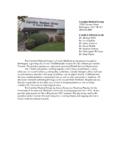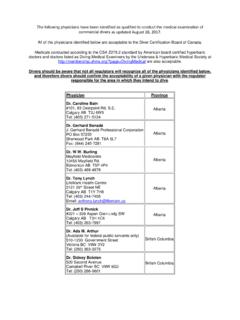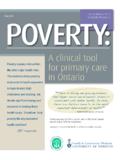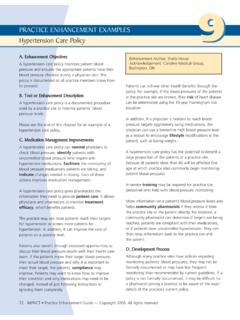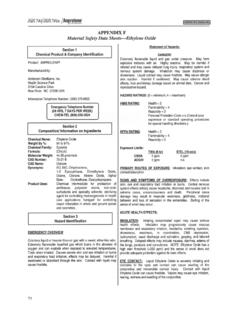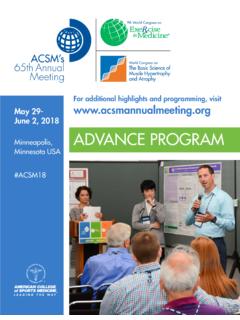Transcription of Mental Health Research using EMPowerplus - …
1 Mental Health Research usingEMPowerplusLatest Research SummaryAs ofMarch 2017we have 34publications!2 Condition Study# ,9,11,12,13,15,20,23,25 ,6,15,16,17,21, ,14,18,19,24,25,27,29,32,33, ,15,30 Explosive ,31 General Mental ,17 Mood ,6,19,23,30,31 Obsessive Compulsive Disorder [OCD].. ,3,16 Severe Mood ,6, ,7,10,17,21 Traumatic Brain Ellen J. Sole, Julia J. Rucklidge, Neville M. BlampiedAnxiety and Stress in Children Following an Earthquake: Clinically Beneficial Effects of Treatment with Micronutrients J Child Family Study ABSTRACT This study examined the effects of micronutrients on children with clinically elevated stress and anxiety 23 36 months after experiencing a natural disaster (a major earthquake). A single-case multiple-baseline design allocated 14 children (7 males, 7 females; aged 8 11 years; 10 with formal anxiety-disorder diagnoses) randomly to 1, 2 or 3 week baselines.
2 Participants then took eight capsules/day of a micronutrient formula ( EMPowerplus ) during an 8-week open-label trial. Assessment instruments were the Children s Global Assessment Scale (CGAS), the Screen for Child Anxiety-Related Emotional Disorders (SCARED), the Pediatric Emotional Distress Scale (PEDS), and the Revised Children s Manifest Anxiety Scale (RCMAS). Symptom severity declined slightly in baseline for some children and declined much more during intervention for all children. Effect sizes at end of treatment were (RCMAS), (SCARED), + (CGAS), and (PEDS). Modified Brinley plots revealed decreases in anxiety and improvements in overall functioning for 10 out of 11 completing participants. Side effects were mild and transient. The study provided evidence that treatment with a dietary supplement containing micronutrients reduced children s post-disaster anxiety to a clinically significant degree.
3 Future placebo-controlled randomized-controlled trials and treatment-comparison Research is recommended to determine if this is true of anxiety in general. 2. Bonnie J. Kaplan, Wanrudee Isaranuwatchai, and Jeffrey S. HochHospitalization cost of conventional psychiatric care compared to broad-spectrum micronutrient treatment International Journal of Mental Health SystemsABSTRACT Background: Healthcare costs are skyrocketing, with Mental Health treatment amongst the most expensive, especially when hospitalization is involved. According to the Mental Health Commission of Canada, one in five Canadians is living with a Mental disorder in any given year, at an annual cost of $50 billion. In light of this societal burden, alternative approaches are being evaluated, such as brief psychotherapy by phone, peer support, and, as part of the emerging field of nutritional Mental Health , treatment with micronutrients (minerals and vitamins).
4 Effectiveness of micronutrients has been demonstrated for many types of psychiatric symptoms, in about 45 studies of formulas that are either multinutrient ( , several B vitamins) or broad-spectrum (usually over 20 minerals and vitamins). Although this literature demonstrates therapeutic benefits, the potential economic impact of micronutrient treatment has been evaluated in only one case study of childhood : The current case study was initiated to evaluate Mental Health -related hospitalization costs from 1997 to 2003 for a female adult diagnosed with various mood and psychotic symptoms. She was treated for the first 5 years with conventional methods and then subsequently with a broad-spectrum micronutrient : The patient s annual Mental Health hospitalization costs during conventional treatment averaged $59,864 across 5 years (1997 2001), with a peak annual cost of about $140,000.
5 Since transitioning to broad-spectrum micronutrients, she has incurred no provincial hospitalization costs for Mental Health care, though her self-funded costs are currently $720/year for the : Further exploration of the treatment of Mental Health problems with broad-spectrum micronutrient formulas has the potential to make two significant contributions: improved Mental Health , and decreased costs for governments. 3. Lewis Mehl-Madrona and Barbara MainguyAdjunctive Treatment of Psychotic Disorders with Micronutrients The Journal of Alternative and Complementary MedicineABSTRACT Objective: To evaluate the effect of micronutrients (minerals and vitamins) on adult psychosis when added to conventional medications by using a placebo-controlled randomized design with a 1-month open-label : Longitudinal comparison study following a randomized, controlled trial that had failed because participants declined to undergo : Rural primary care and psychiatry clinic in northern New England (town of 16,000 people).
6 Participants: People older than age 18 years diagnosed with a psychotic disorder who were receiving : Fifty consecutive clients seen in 1 month s time were invited to participate; 19 completed a 1-month open-label phase of the addition of a micronutrient to their medication regimen; all 19 then withdrew rather than risk randomization to a placebo. This finding itself was important, so the study was restructured to compare the response of those 19 patients during 24 months of micronutrients + medication to the response of the 31 people who declined participation, enriched by an additional 28 consecutive patients recruited over the second month of the study. This yielded a total of 59 patients who received medication without measures: All clients were evaluated with the Positive and Negative Symptom Scale and the Clinical Global Impression scale at study baseline and after 3, 6, 9, 12, 15, 18, and 24 months.
7 Psychosis was confirmed with clinical interview by using Diagnostic and Statistical Manual of Mental Disorders, fourth edition, text revision, criteria. All participants had normal physical examinations and laboratory : Outcomes were similar for both groups until 15 months, although the micronutrient group used significantly less antipsychotic medication throughout that time ( p < ). At 15 months, the micronutrients + medication group exhibited significantly fewer symptoms than the medication-only group, a difference that was even stronger at 24 : Micronutrients may appear to be a beneficial long-term, adjunctive strategy for people with psychotic disorders, allowing for smaller doses of medication to achieve the same effectiveness with fewer side Bonnie J. Kaplan, Caroline Leaney, and Ekaterina TsatskoMicronutrient Treatment of Emotional Dyscontrol Following Traumatic Brain Injury Annals of Psychiatry and Mental HealthABSTRACT Introduction: Emotional dyscontrol following traumatic brain injury (TBI) impairs social relationships and employability.
8 Micronutrients (minerals, vitamins) stabilize emotional lability in psychiatric patients, and various individual nutrients have been used to treat experimental brain injury in laboratory animals in the acute phase. However, the current case report appears to be the first documentation of micronutrients resulting in normalization of emotion regulation in a long-standing brain injury in a presentation: A broad-spectrum formula of micronutrients was evaluated in a 35-year-old male who had incurred a severe TBI eight years previously. Resolution of most post-TBI symptoms was achieved during those eight years, but not his episodic loss of emotional control, which psychiatrists evaluated as being permanent. The trial of micronutrients began after five weeks of baseline symptom monitoring with a mood stability scale. By three months mood stability had improved markedly according to data submitted by two raters (the patient and his clinician) who were blind to each other s evaluations.
9 Data collection continued for one year, showing significant improvement (p<.0001), at which time the patient reported that his emotional control had returned to his pre-TBI level. The improvements led to his establishing his own business and improving his family relationships. Conclusions: Micronutrient treatment resulted in resolution of this patient s longstanding post-TBI emotional dyscontrol. Broad-spectrum micronutrient formulas are showing benefit for the treatment of mood lability in various types of psychiatric patients; this report indicates there is also potential value in using them for the emotional dyscontrol found in post-TBI Michael I. Gurevich, MD and Cassandra L. Robinson, MS, LPN An Individualized Approach to Treatment-resistant Bipolar Disorder: A Case Series EXPLORE July/August 2016, Vol. 12, No.
10 4 ABSTRACT Objective: Determine retrospectively if individualized, integrative treatment strategies applied while withdrawing pharmaceuticals were beneficial and safe among a TRBD clinic : A chart review was performed for six adult patients, treated in a private psychiatric practice. Data were collected regarding psychiatric diagnosis, hospitalizations, medications, side effects, substance abuse, and applied : using individualized, integrative psychiatric treatment methods, the majority of medications were eliminated. Long-term remission was attained in all cases, defined as clinical stability with no discernable symptoms of bipolar disorder for at least one : Applying an integrative treatment approach, and eliminating most medications, provided lasting resolution of symptoms and side-effects in a selected sample of TRBD outpatients.
